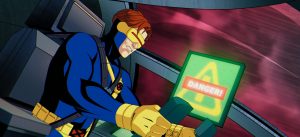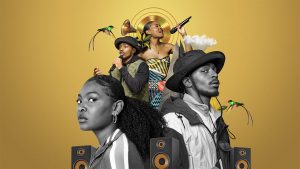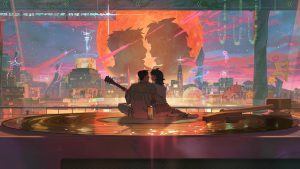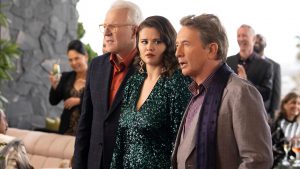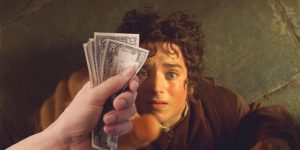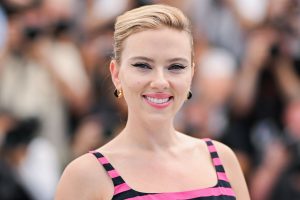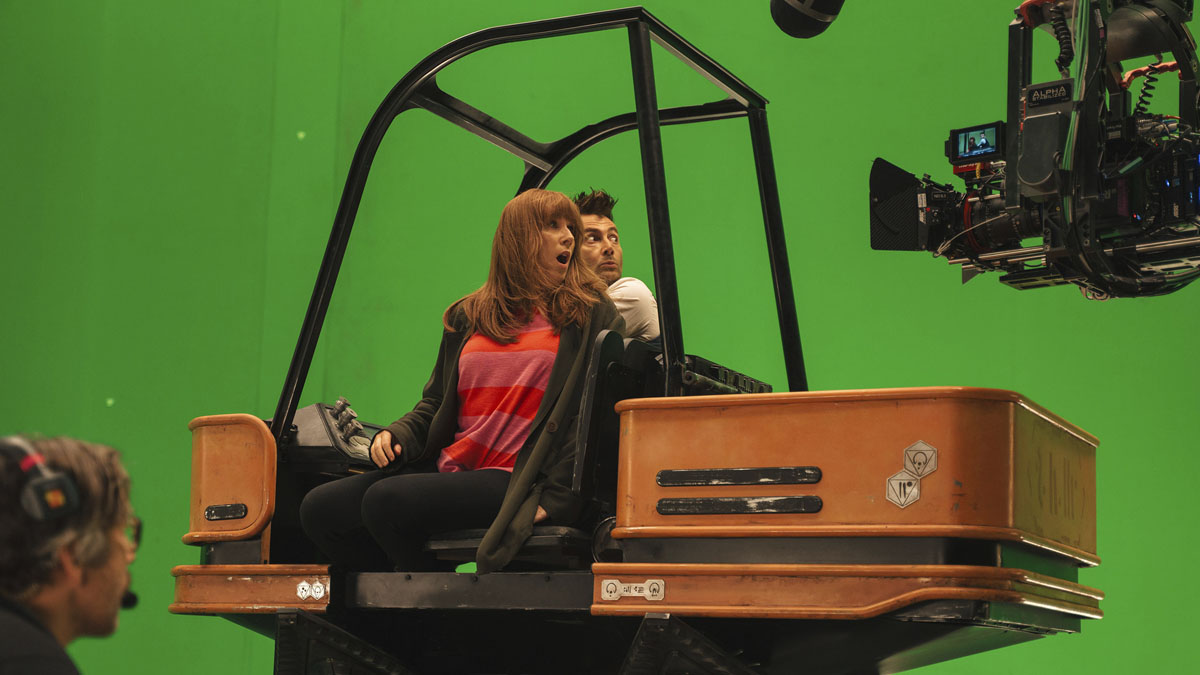
Unlike “The Star Beast”, there’s no in-episode commentary for “Wild Blue Yonder” but there’s still plenty for fans of nerdy making-of details to get their teeth into thanks to this informative how-to thread from director Tom Kingsley, and this bonus video going into how the VFX and practical in-camera effects were achieved.
Add to that a fresh episode of The Official Doctor Who Podcast containing nuggets from Russell T Davies alongside reactions and chat from hosts Christel Dee, Juno Dawson and Tyrell Charles. Plus a decent behind-the-scenes tour from Doctor Who: Unleashed. Watch and listen to them all for fun factoids and titbits like the ones below.
1. Speaking on The Official Doctor Who Podcast, Russell T Davies cites a season 15 serial as the inspiration for “Wild Blue Yonder”:
“People expect you to base episodes on old or classic episodes like “Genesis of the Daleks” or “The Caves of Androzani”, or “Blink” or “The Timeless Child” [sic] – I don’t think anyone really expected me to base an episode on “Underworld”. Because that’s what we’ve done. We’ve got special effect corridors all the way through, we’ve got corridors that the cast aren’t really in, just like they did all those years ago. That probably took you by surprise.”
“Underworld” is a 1978 Fourth Doctor serial in which the TARDIS materialises on a ship on the edge of the universe, and the Doctor and Leela walk through a cave system using colour separation overlay – a VFX technique that was cutting edge at the time and a precursor to modern green screen effects.
2. Contortionist Tommaso Di Vincenzo (who also appeared in Mark Gatiss’ The Mezzotint) physically performed the part where the creature impersonating the Doctor bent double backwards and walked along like a crab.
3. The Doctor’s giant hands are models of David Tennant’s actual arms created by Millennium FX using a 360 body capture scan made using 204 cameras photographing at the same time. The arm section contained a trigger so Tennant could move the fingers, and a special shirt was made to contain both the actual Tennant and his massive new appendages.
4. Filming for the episode took place in July 2022 in the middle of a UK heatwave that saw temperatures of 37 degrees. Catherine Tate had to shove an air conditioning tube up her stripy jumper to cool down between scenes.
5. To decorate the spaceship, production designer Phil Sims and graphic designer Stephen Fielding invented a language of alien glyphs inspired by horse hooves to tie in with the horse-like skeleton of the ship’s captain. Sims explained on Doctor Who: Unleashed:
“Our pilot is equine, horse-like, and we thought what would it be like if they had hooves, how would their language have developed? Maybe they scratched with their hoof, maybe they clopped with their hoof and so the shapes are derived from scrapes and maybe once upon a time in the equivalent Sanskrit for the horse aliens.”
6. The goo in the drawers of “The Filament Room” where the Doctor has Donna move sections from one drawer to another is supposed to be a honey-like substance but was actually hair gel. “It’s a a re-use of the fluid or liquid that’s the life blood of this spaceship, and in this case it’s kind of like a computer room or a programming room,” says production designer Phil Sims, they’re like blocks of code and the Doctor’s rewiring or recoding or reprogramming the space ship.”
7. Production designer Phil Sims also designed on Captain Marvel, Guardians of the Galaxy and Star Wars, so he’s no stranger to creating spaceships. On this episode of Doctor Who, his team repurposed the spaceship’s ante-chamber into a space called “The Industrial Room”, to stretch the budget further.
8. Like any good spaceship set on film or TV, the automatic doors are much less high-tech than they look. The ones that open upwards are operated by a crew member with a pulley and the ones that slide to each side are pulled along manually by two crew members, one on each side.
9. (Sir) Isaac Newton was played by Nathaniel Curtis, who starred as Ash in Russell T Davies’ Channel 4/HBO series about the 1980s AIDS epidemic It’s a Sin.
10. The episode’s very first establishing shot is of Woolsthorpe Manor in Lincolnshire, the actual house where Sir Issac Newton lived. The apple tree scene though was filmed in Dunraven Gardens on the Welsh coast, and the TARDIS-crash scene featuring the Doctor and Donna was filmed at Wolf Studios a few days later. The insurers didn’t want David Tennant, Catherine Tate and the TARDIS to really balance 12 foot high in a tree, so they filmed them separately at the studio, with the TARDIS balanced on a massive tyre and surrounded by a load of apple trees in buckets, and digitally composited the two shots into one.
11. Catherine Tate questioned why Donna changed from using the word “gravity” to “mavity” mid-episode, and David Tennant explained:
“Time is linear you see, even though you zip around in it, so when you said “Gravity”, that’s the word you’d learned. But then [Isaac Newton] mishears you, he changes it to “Mavity” and because he’s coining the phrase right there and then, he then changes history from that moment on. In that moment when he changes it, it’s like temporal dominoes and it affects everything from that moment. You changed time. You change your own education system in that moment.” Simple.
12. Rehearsals with the Doctor and Donna and their evil counterparts were complicated, says director Tom Kingsley. Each scene was rehearsed with Tennant and Tate as the Doctor and Donna, and then rehearsed with those two as their monstrous alien twins, so the body doubles had a sense of how Tennant and Tate would perform – and then they kept swapping until it was right.
13. “Jimbo” the robot is a to-scale physical puppet made by creature and special effects puppeteer Brian Fisher. There’s a bespoke aluminium frame inside his body that can be posed just like a tiny puppet armature, and puppeteers use sticks attached to his limbs to make him walk and move. “He’s essentially the biggest stop-motion model we’ve ever made in our lives,” Fisher told Doctor Who: Unleashed.
14. Bernard Cribbins first appeared in Doctor Who in Christmas special “Voyage of the Damned” and recurred in multiple episodes, memorably including the Tenth Doctor’s final story “The End of Time”. Cribbins filmed his scenes for this episode at Camden Lock on May 16 2022 and sadly died two months later at the age of 93. Cribbins’ return meant a lot to everybody on Doctor Who, as Russell T Davies told Doctor Who: Unleashed:
“It’s one of the great joys of my life that at the end of Bernard’s career, at the end of his life, he came back to us to shoot what actually turned out to be his final scene, we didn’t know that at the time. He loved coming back. He had kind of retired but he loved Doctor Who. He came to our readthrough, he was there, we all went out for dinner, we had such a happy time. We wanted to do more because we loved him, he wasn’t well enough to do more but that one scene he completed fills me with absolute joy.”
15. Catherine Tate had a prosthetic for her evil copy’s long arm, and an extra fake leg strapped to her for the scene in which the monsters discuss how many knees human beings have. The sharp teeth were prosthetic and not CGI too – cue lots of puns on set about bending over backwards, getting your teeth into things and completing scenes by the skin of their teeth.
16. Episode director Tom Kingsley also made the first two series of BBC comedy Ghosts, and was responsible for developing many of the practical and visual effects used on that show (walking through walls, the headless Humphrey, and countless others), making him perfect for practical solutions to this VFX-heavy Doctor Who story. When Donna’s evil copy melted? A hole in the floor and some goo, and job’s a good’un.
17. When writing “Wild Blue Yonder”, Russell T Davies considered every avenue, he told this behind-the-scenes video:
“I remember writing it thinking, shall we find a cellar full of robot killers? Shall we discover a vault on the spaceship that’s got William Hartnell inside it? Genuinely I thought for the 60th, shall we do this, shall we do that and I had to have words with myself I had to sit there and say just stay true to the idea. You said to yourself it’s just the two of them on board a spaceship with their doubles, stick to that.” And he did.
Doctor Who continues with “The Giggle” on Saturday December 9 at 6.30 p.m. on BBC One in the UK, and on Disney+ around the world.
The post Doctor Who: Wild Blue Yonder – Behind-the-Scenes Facts, Easter Eggs & Nerdy Details appeared first on Den of Geek.

